The -cline Family
In the last few posts we’ve talked about the various types of faults, the simple ones at least. Today we are going to talk about some of the effects they can have on their surrounding rocks. These features form in an area with crustal compression, where the the earth’s crust is getting crumpled due to a collision between the various plates that it consists of (another post, coming soon). They are the manifestation of faulting of the underlying bedrock, and are found in sedimentary rocks. They can be easily imagined as taking a couple of blankets, laying them one atop the other and then slowly pushing two sides toward each other. You will end up with three main types of folds, the -cline family, anticline, syncline, and monocline. Anticlines and synclines are rarely symmetrical, so often they are referred to as asymmetrical anticlines and synclines. When these features are formed, the layers you see today were deeply buried, erosion has removed a vertical mile, oftentimes more than that, of rock. These features wouldn’t form their beautiful sweeping forms if it weren’t for that fact that sedimentary rocks tend to be ductile (flexible) when under pressure. You can try to bend a piece of sandstone and what happens, SNAP!!!, but if you bury it under a couple miles or more of rock, it will behave quite differently (more on that later).
The Anticline
An anticline is a bulge or upward bend in the rock (Fig. 1). They often are of caused by two reverse faults forcing a dome of rock upwards (Fig. 2). If thrust faulting is occurring, you almost always have an asymmetrical anticline, where on one side of the uplift the layers arc up at a steeper angle than the other (Fig. 3).
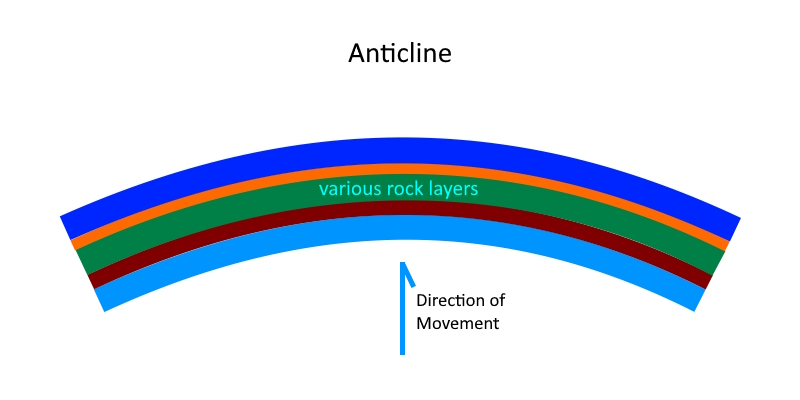
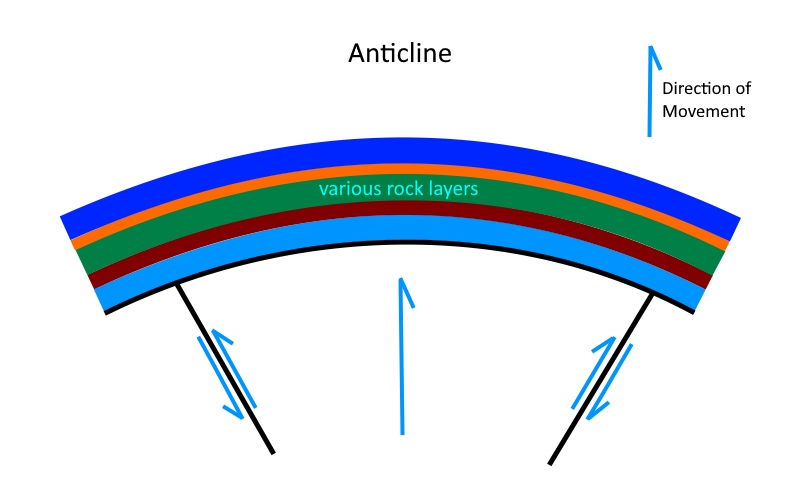
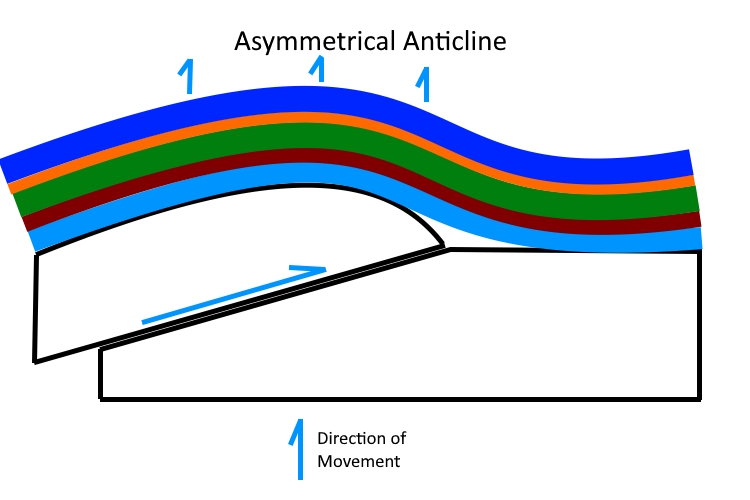
Synclines
A syncline is a downward bend of the rock layers (Fig. 4). These are also associated with crustal compression and are usually found in conjunction with anticlines. Two opposing thrust faults sometimes will edge a syncline (Fig. 5).
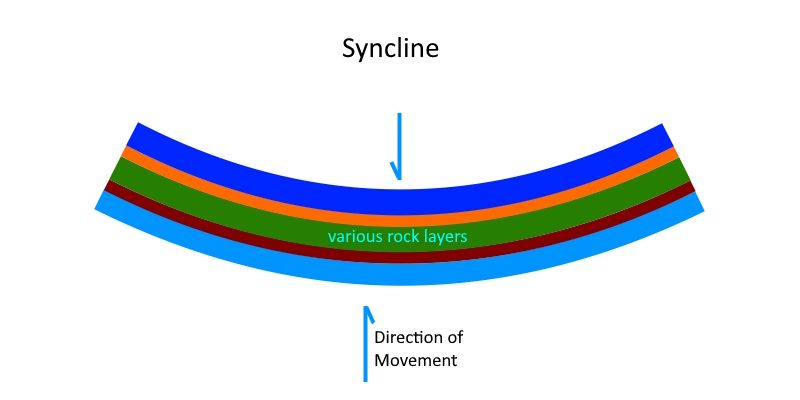
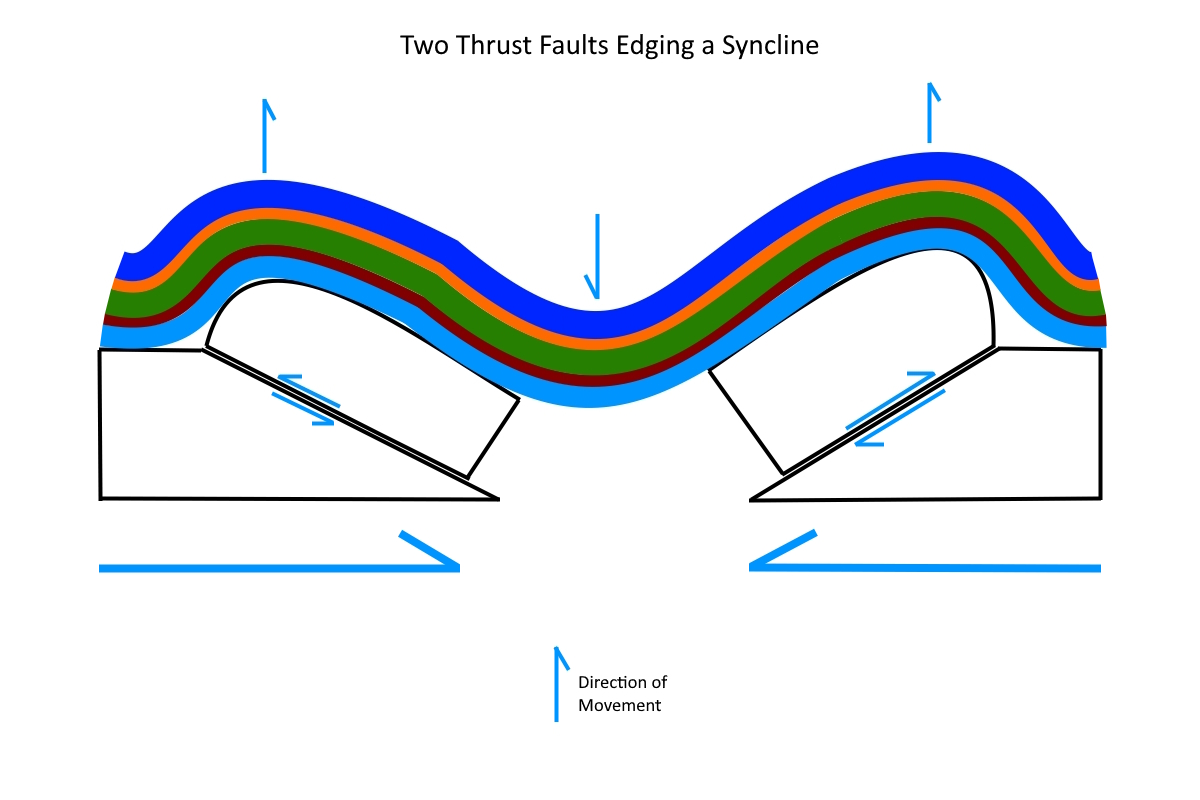
Monoclines
Monoclines form when a flat-lying layer bends upward and then flattens out again (Fig. 6). This is caused by the upward movement of a fault block at depth moving in relation to its neighbor, deforming the (originally) flat-lying layer (Fig. 7).
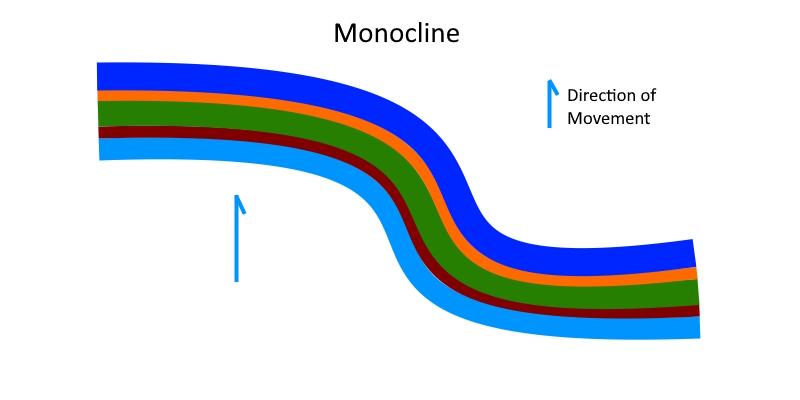
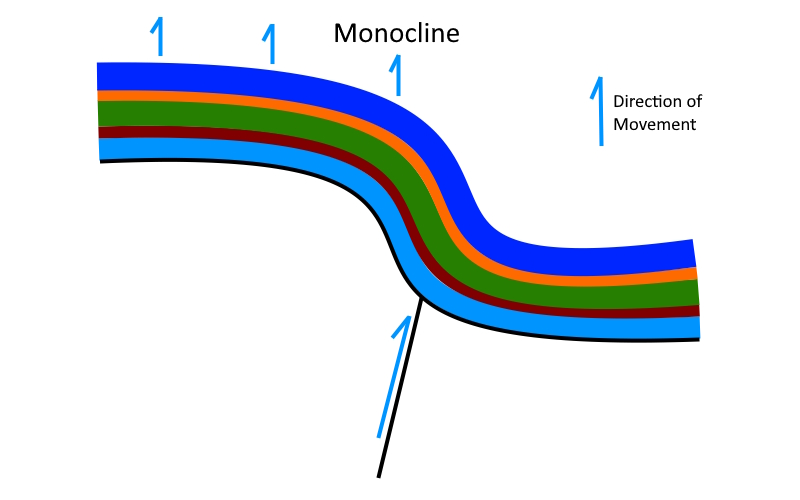
Where to see the -cline family
- Colorado Plateau, AZ, UT, CO, NM
- Bighorn Basin, WY
- Dinosaur National Monument, UT & CO (hint, hint)
References
- Roadside Geology of Nevada, F. DeCourten and N. Biggar
- Roadside Geology of Utah, L. Chronic and H. Chronic
- Roadside Geology of Colorado, F. Williams and H. Chronic
- BOMUSD Science Teaching Staff
- Interpretive Signs at pretty much every National Park in the Southwest
